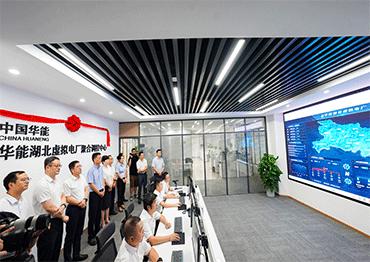The consensus among energy experts regarding VPP development is that there must be a sustainable business model to achieve financial viability. “The key issue is how to expand the profit pool so that all participants receive a fair share of the returns,” Zhang Yongping said.
For Zhou Feng, the focus on developing VPPs must go beyond ensuring the stability of power supply. Zhou hopes that the emphasis on market mechanisms in the guideline issued by the central government in April could provide new momentum to establish a market-based model.
Compared to China, some countries have far more mature VPP markets. In Germany, VPPs are fully commercial and companies like Next Kraftwerke have networked thousands of electricity producers, consumers and storage facilities, which can generate revenue through multiple sources such as grid services, energy arbitrage (buying power at low prices and selling it when demand is high) and regulatory reserves.
In the US, demand response programs remain a core function of VPPs. However, VPPs there can participate in capacity markets and are paid for just being available. In some states, VPPs are allowed to offer tailored energy packages to customers directly.
The major hurdle for the commercialization of VPPs in China is the absence of a liberalized energy market. Currently, the price of electricity is determined through a mixed system that includes both government-administered pricing and market-based mechanisms.
While the government has started to gradually liberalize the energy market, only a few provinces, including Shanxi and Shandong, have established electricity spot markets that allow VPPs to participate on a regular basis.
Zhang Qiang, vice general manager of Huagong New Energy Technology, a VPP operator, told NewsChina that VPPs have great potential if the electricity market is liberalized.
“We mainly aggregate two types of resources,” Zhang said. “One comes from large industrial and commercial users, which often have energy-intensive equipment that can shift production to off-peak hours. The other is energy storage, which is the best tool for balancing supply and demand. But storage deployed by industrial and commercial enterprises for their own energy backup and potential energy sale is still in the early stages of market adoption and remains limited.”
“Right now,” Zhang added, “most companies have little understanding of VPPs. They may have thought about saving energy and cutting costs, but not through participating in the electricity market. And the market mechanism itself is still underdeveloped. Even if VPP operators sign deals with companies, it could take two or three years before they see any return. The promised benefits are mostly estimates, and the current returns are too small to attract much interest.”
For energy experts like Zhou Feng, China should speed up energy pricing reform to establish electricity spot markets in all provinces and regions that allow new types of participants, including VPPs, to take part in.
Zhou believes that the April guideline will encourage provinces to tailor their development plans to local conditions. Given the diverse energy structures across regions, power markets vary significantly.
In coal-rich provinces like Shanxi, the focus is on valley filling, which is making use of excess renewable energy during low-demand periods. Meanwhile, in the Yangtze Delta area, which has yet to launch a spot market, the focus is oriented toward peak shaving, a method to reduce consumption during periods of high demand.
These differences shape how virtual power plants are designed and deployed. Valley-filling markets, where demand is relatively low and renewable energy output is high, often experience large price differentials. This creates stronger incentives for VPPs to absorb surplus electricity during off-peak hours.
There are signs the reform is gradually expanding. In November 2024, Zhejiang Power Exchange Center said the province would, “at an appropriate time,” allow new market participants, such as grid-side energy storage and virtual power plants, to join spot market trading, though no timeline was provided.
But for Zhang Qiang, the challenge runs deeper. Even if the market opens, China’s VPP sector still has a long road ahead. Currently, China’s VPP operators remain small and fragmented.
“The VPP market is still in the cultivation stage, and it’s just as important to build up the capabilities of operators,” Zhang said. “After all, the capability of a VPP that aggregates 100,000 enterprises is very different from one that aggregates 100.”

 Old Version
Old Version

